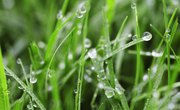
A wet bulb thermometer is simply a regular mercury thermometer whose bulb is covered with wet fabric, usually muslin, that is dipped in a reservoir to keep it wet. Why would you need one of these? The answer is that a wet bulb thermometer, when used in conjunction with a dry bulb thermometer (which is simply a regular thermometer without the wet fabric covering), gives you a way to measure the relative humidity of the air. The difference between wet bulb temperature and the dry bulb temperature depends on how much moisture is in the air.
How Does a Wet Bulb Thermometer Measure Relative Humidity?
The concept behind a wet bulb thermometer is simple, but keep in mind that, to measure relative humidity, it has to be used in conjunction with a dry bulb thermometer. The dry bulb temperature is basically the temperature of the air, but the wet bulb temperature is affected by the evaporation of water from the fabric enclosing the bulb. Evaporation is an endothermic process, which means it absorbs heat, so the wet bulb temperature is lower than the dry bulb temperature or the same. It is never higher.
As anyone who has ever been in the desert knows, water evaporates more readily in dry air. The drier the air is, the lower is the temperature recorded by the wet bulb thermometer and the greater the difference between the wet bulb and dry bulb temperatures. On the other hand, if the air is very humid, the wet bulb temperature isn't much different from the dry bulb temperature. If the relative humidity is 100 percent, which means the air can't hold any more moisture, no evaporation occurs, and the wet bulb and dry bulb temperatures are the same.
What Is Relative Humidity?
Humidity is a measure of how much moisture is is in the air, but by itself, it isn't easy to quantify. This is because warm air can hold more moisture than cold air. If the temperature is warm and the humidity is high, and the temperature suddenly drops, water will start to condense and form droplets. The point at which this occurs is called the dew point. At the dew point, the air is completely saturated.
The difference between the amount of moisture in the air and the amount that would cause droplets to condense is the relative humidity. It's expressed as a percentage. At the dew point, the relative humidity is 100 percent, and the dry bulb vs. wet bulb temperatures are the same. At 0 percent humidity, on the other hand, the difference between the wet bulb and dry bulb temperatures is at its maximum. The wet bulb temperature is always between the dry bulb temperature and the dew point.
Relating Temperature to Relative Humidity
The difference between the wet bulb and dry bulb temperatures doesn't directly produce a relative humidity reading. You usually have to consult a wet bulb chart, also known as a psychrometric diagram or a Mollier chart. This chart tells you the moisture content of the air if you know two of the three following parameters: wet bulb temperature, dry bulb temperature and dew point temperature.
Wet bulb and dry bulb thermometers often come combined in a single measuring instrument called a sling thermometer.. The thermometers are placed side by side in a see-through enclosure, and to prevent the evaporation from the wet bulb from affecting the reading of the dry bulb, the wet bulb is usually set at a lower level.
References
About the Author
Chris Deziel holds a Bachelor's degree in physics and a Master's degree in Humanities, He has taught science, math and English at the university level, both in his native Canada and in Japan. He began writing online in 2010, offering information in scientific, cultural and practical topics. His writing covers science, math and home improvement and design, as well as religion and the oriental healing arts.
